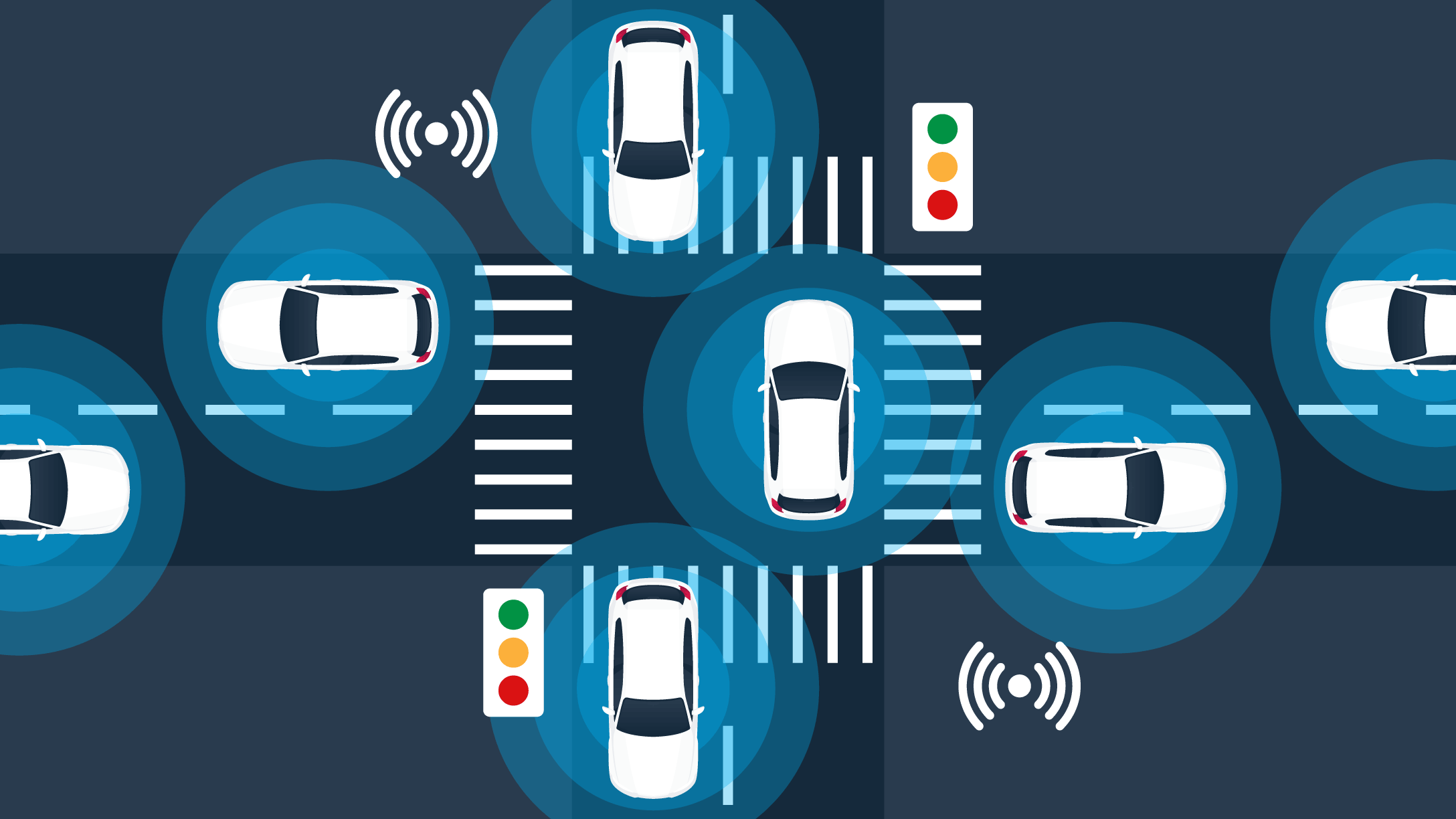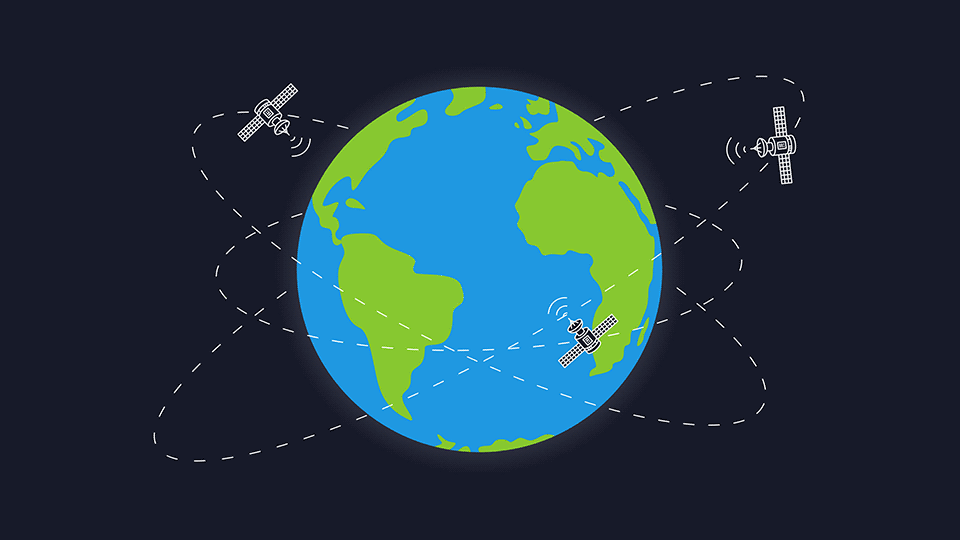What is telematics?
Learn about telematics and how it works.

Telematics is a method of monitoring cars, trucks, equipment and other assets using GPS technology and on-board diagnostics (OBD) to plot the asset movements on a computerized map. Also known as fleet tracking or GPS vehicle tracking, telematics is now an essential management tool for many commercial and government fleets.
What is telematics?
Imagine a knowledgeable computer in your vehicle that can monitor and report on nearly every detail — from speed and idling to fuel use, low tire pressure, and more. This information, or telematics data, can help save on vehicle maintenance costs or improve fuel efficiency by learning more about driving habits. This describes telematics technology, also known as GPS fleet tracking.
To track assets, information from the vehicle is recorded via a small telematics device — also called a black box — that plugs into the OBD II or CAN-BUS port. A SIM card and modem in the device enable communication on the cellular network.
There are several key hardware components of a telematics device:
- GPS receiver
- Engine interface
- Input/output interface (expander port)
- SIM card
- Accelerometer
- Buzzer
.png)
In addition to the hardware, the algorithm used for GPS logging is another critical factor because it impacts the quality and accuracy of the data. Read more about curve logging here.
See also: Debunking the Top 10 Vehicle Tracking Myths
How does telematics work in a car?
The telematics device retrieves data generated by the vehicle, like GPS position, speed, engine light information and faults. Even G-force is measured by a built-in accelerometer in the telematics device. The data collected by the vehicle's telematics device is sent to the cloud.
A vast amount of data can be processed and analyzed with a telematics device and other connected hardware or sensors, such as:
- Position
- Vehicle speed
- Trip distance/time
- Idling time
- Harsh braking and driving
- Seat belt use
- Fuel consumption
- Vehicle faults
- Battery voltage, and other engine data
.png)
Telematics data is sent from the vehicle to the fleet management software portal.
How does telematics software work?
The data collected from the telematics device is decoded and brought into afleet management software application for visualization, reporting and analysis. With telematics software, users can view and export reports and gain business intelligence such as the top 10 drivers with the highest number of speeding incidents or vehicles due for scheduled maintenance.
Data analytics and machine learning offer a way to get further use of telematics data. For example, fleets can use benchmarking to see how their fleet performs on safety compared to similar fleets or understand if routes are structured in the best way.
Open-platform telematics systems
As technology has evolved, telematics systems have moved from a standalone approach to an open platform. Through open-platform telematics, companies can integrate other hardware accessories, software, and mobile apps for greater efficiency and insight into business operations.
Popular telematics integrations include dash cameras, electronic logging (ELDs), dispatching and route optimization, mobile forms, remote diagnostics, or weather alerts.
.png)
The different ways businesses use telematics
History of telematics
The word “telematics” is a blend of two terms: “telecommunication” and “informatics.” Telecommunication is the exchange of information using technology. Informatics refers to the use of computers to gather and analyze data and manage real-world systems.
In the 1960s, these two sciences (telematics and informatics) merged when the U.S. Department of Defense developed the Global Positioning System (GPS) to track the movements of U.S. assets and improve military communication.
Telematics owes its existence to three unique breakthroughs of modern technology: the internet, GPS, and machine-to-machine communication (M2M). The field of vehicle telematics also includes wireless safety communications, GPS navigation, integrated hands-free cell phones, and automatic driving assistance systems.
What is fleet telematics?
These days, telematics software is essential for effective fleet management.
Telematics software helps fleet managers answer questions such as:
- How can we reduce fuel consumption?
- Are my drivers speeding?
- Would switching to electric vehicles be cost-effective for our business?
- Is idling costing my fleet time and money?
Fleets of all sizes and business types use telematics software, from small businesses to large corporations, not-for-profit organizations and government agencies. Allied Market Research values the global automotive telematics market at $50.4 billion in 2018 and estimates it will reach $320 billion by 2026.
Industries using fleet telematics software (sample list):
- Courier and delivery companies
- Field sales and other services such as HVAC, plumbing, etc.
- Towing companies
- Trucking and transportation logistics
- Construction businesses
- Food and beverage companies
- Transit fleets, such as motor coach, public transit, taxi and paratransit
- Oil, gas, and mining industries
- Utilities
- Police, first responders, and other public agencies
- Landscaping
- Waste management fleets
- Car rental and leasing companies
The benefits of fleet telematics
Telematics software assists in six core areas of fleet management: productivity, safety, fleet optimization, fleet compliance, integration and sustainability.
- Productivity — Improving customer service by using real-time GPS tracking, trip reporting, and dispatching and routing tools (read a productivity success story here)
- Safety — Increasing safety with in-vehicle driver coaching, risk and driver behavior reporting, collision notifications and reconstruction, and the ability to locate a stolen vehicle (read a safety success story here)
- Fleet Optimization — Streamlining vehicle maintenance with predictive maintenance abilities and remote diagnostics, and fuel management by tracking idling and other fuel-guzzling habits (read an optimization success story here)
- Compliance — Electronic logging and Hours of Service, IFTA reporting, and vehicle inspections (read a compliance success story here)
- Integration — Combining other software systems with telematics such as onboard camera technology or CRM software, and even building new applications (read an optimization success story here)
- Sustainability — Reducing the fleet’s environmental impact and carbon emissions, plus managing electric vehicles (learn more about fleet sustainability)
In insurance telematics, vehicle owners share safety data with their insurance company to help lower the cost of premiums, if they can prove safe driving habits. Telematics devices in a car can help insurance companies better pinpoint driver risk levels and offer premiums based on driver usage. (While not all insurance agencies offer telematics-based insurance, it’s worth discussing with your provider if you’re not self-insured.)
Another area gaining in popularity is the ability to increase vehicle security by integrating identification sensors into vehicles. This allows fleets to authenticate a driver’s identity before starting the vehicle.
The future of fleet telematics
The era of vehicle connectivity is upon us. Whether driving your personal vehicle or managing a fleet, constant communication with nearby vehicles is already achievable through telematics.
Exciting areas of telematics innovation include:
Telematics systems will continue to become better integrated with other operational systems and improve while M2M technology expands. The emergence of smart home and city technologies and Internet of Things (IoT) in fleet management are great examples of the rapid evolution of this space.
Subscribe to get industry tips and insights
The Geotab Team write about company news.
Table of Contents
Subscribe to get industry tips and insights
Related posts

Creating a fleet safety culture that’s built to last: Lessons from Missouri DOT and NYC
July 7, 2025
8 minute read



Field service is losing money to bad data: Go beyond GPS with smarter telematics
June 27, 2025
3 minute read


Enhancing winter road maintenance with postseason materials usage analyses
June 20, 2025
6 minute read